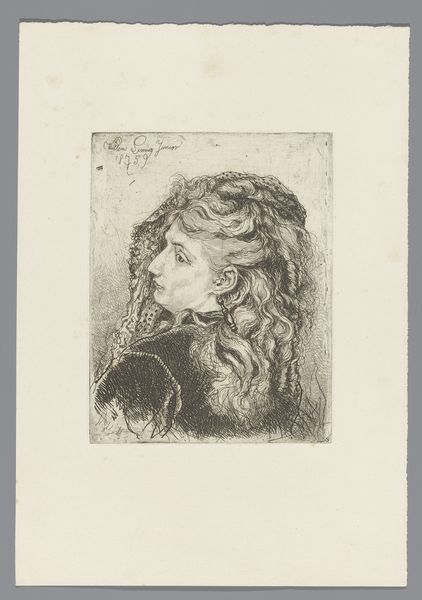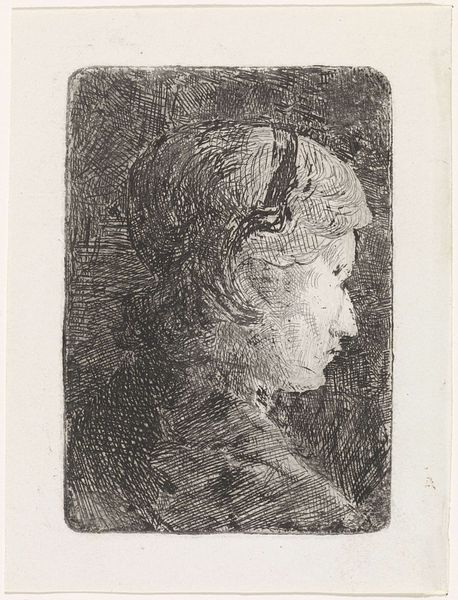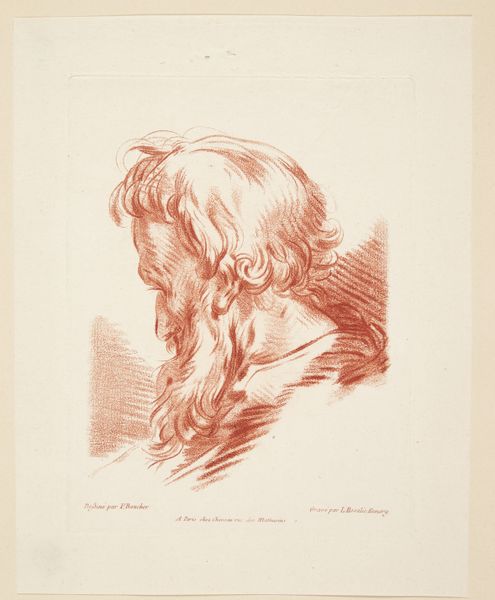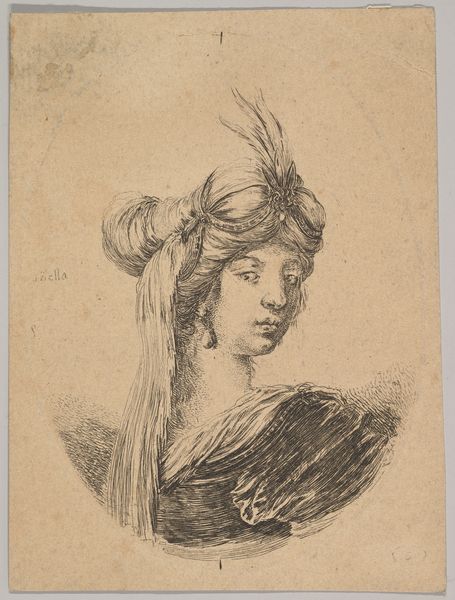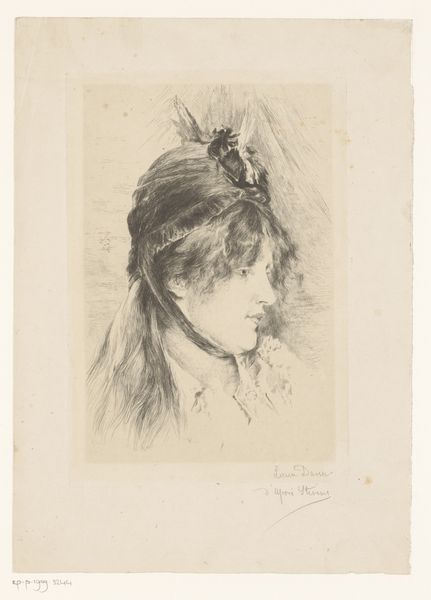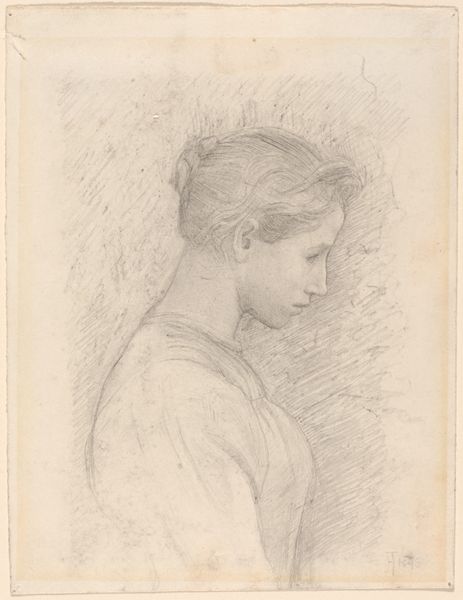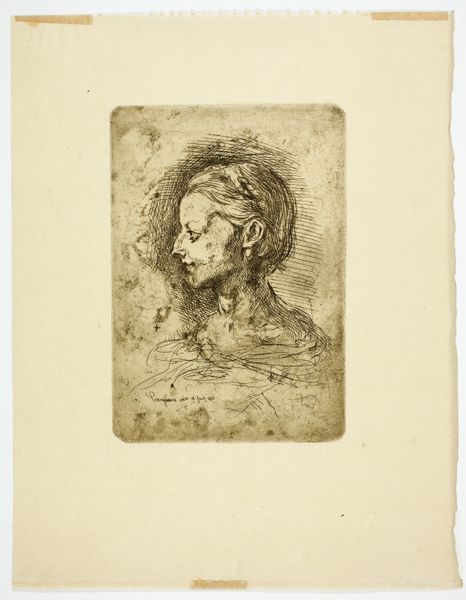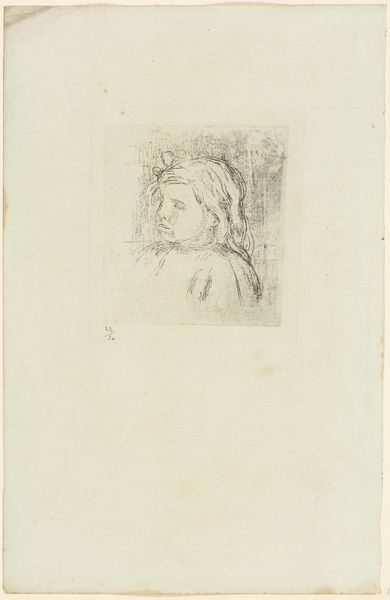
print, etching
#
portrait
#
aged paper
# print
#
etching
#
figuration
#
academic-art
Dimensions: height 153 mm, width 119 mm
Copyright: Rijks Museum: Open Domain
Editor: This is "Portrait of an Unknown Woman," an etching by Willem Linnig the Younger from 1875, housed here at the Rijksmuseum. It strikes me as melancholic; there’s a wistful air about her. What resonates with you most when you view this print? Curator: The immediate symbolism that stands out for me is the profile view itself. Often, profile portraits present a subject in a state of reflection or introspection. Given this woman is 'unknown,' the profile invites us to project our own narratives onto her – a blank canvas for the viewer’s emotional projections. It's from 1875 - the lingering impact of Romanticism perhaps? Editor: I can see that! Do you think her gaze also contributes? Curator: Absolutely, the gaze is key! It’s averted, directed beyond the frame, implying a longing or preoccupation with something unseen. Is she yearning for something lost, or perhaps anticipating something yet to come? In that era, it could represent women's limited roles. Do you feel a sense of restriction in her posture? Editor: Yes, especially with the high collar, she almost seems constrained by it. What about the use of etching as a medium? Curator: Etching, with its delicate lines and tonal range, allows for a certain intimacy. It feels more personal, perhaps, than a grand oil painting. And the softness achieved adds to the air of melancholy we both perceive. This softness could be seen as vulnerability? What's your view? Editor: I agree. It adds another layer to her story, as if revealing a fragile interior. Curator: Indeed. This image then becomes a powerful vessel, carrying layered cultural memories and hinting at the hidden stories of women in that period. A very evocative work, wouldn't you agree? Editor: Definitely. I hadn't considered how much the symbolic choice of the profile, and the printmaking process itself, shapes our reading of the piece.
Comments
No comments
Be the first to comment and join the conversation on the ultimate creative platform.
